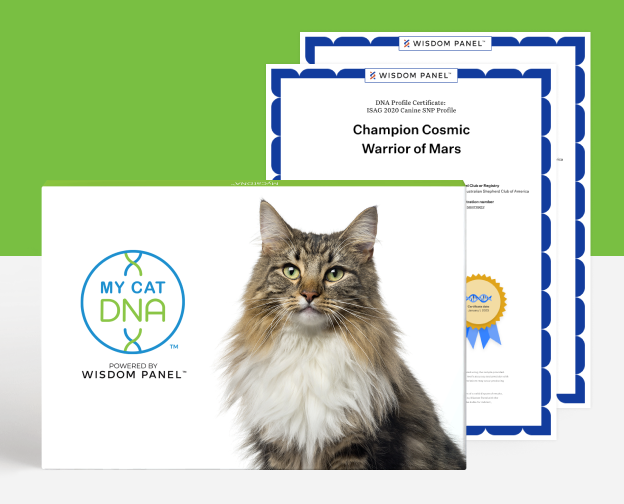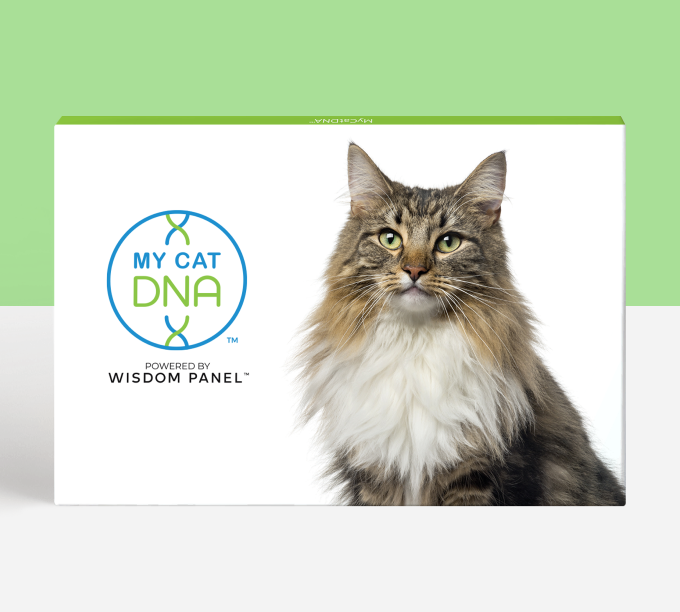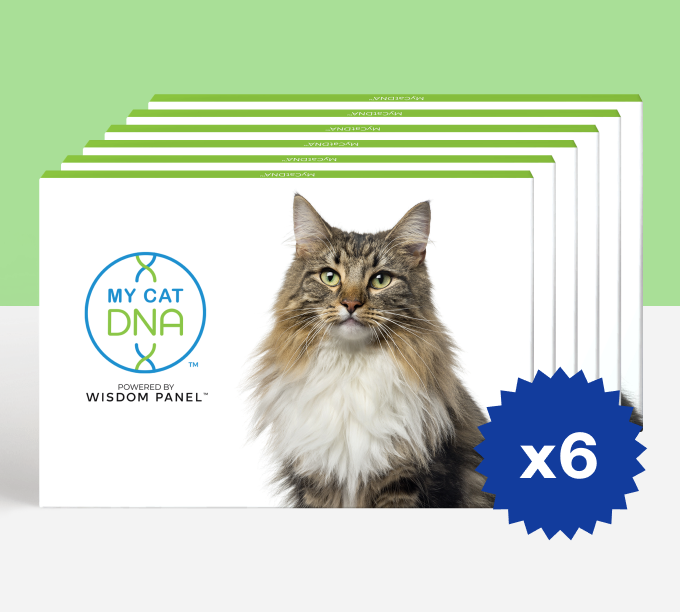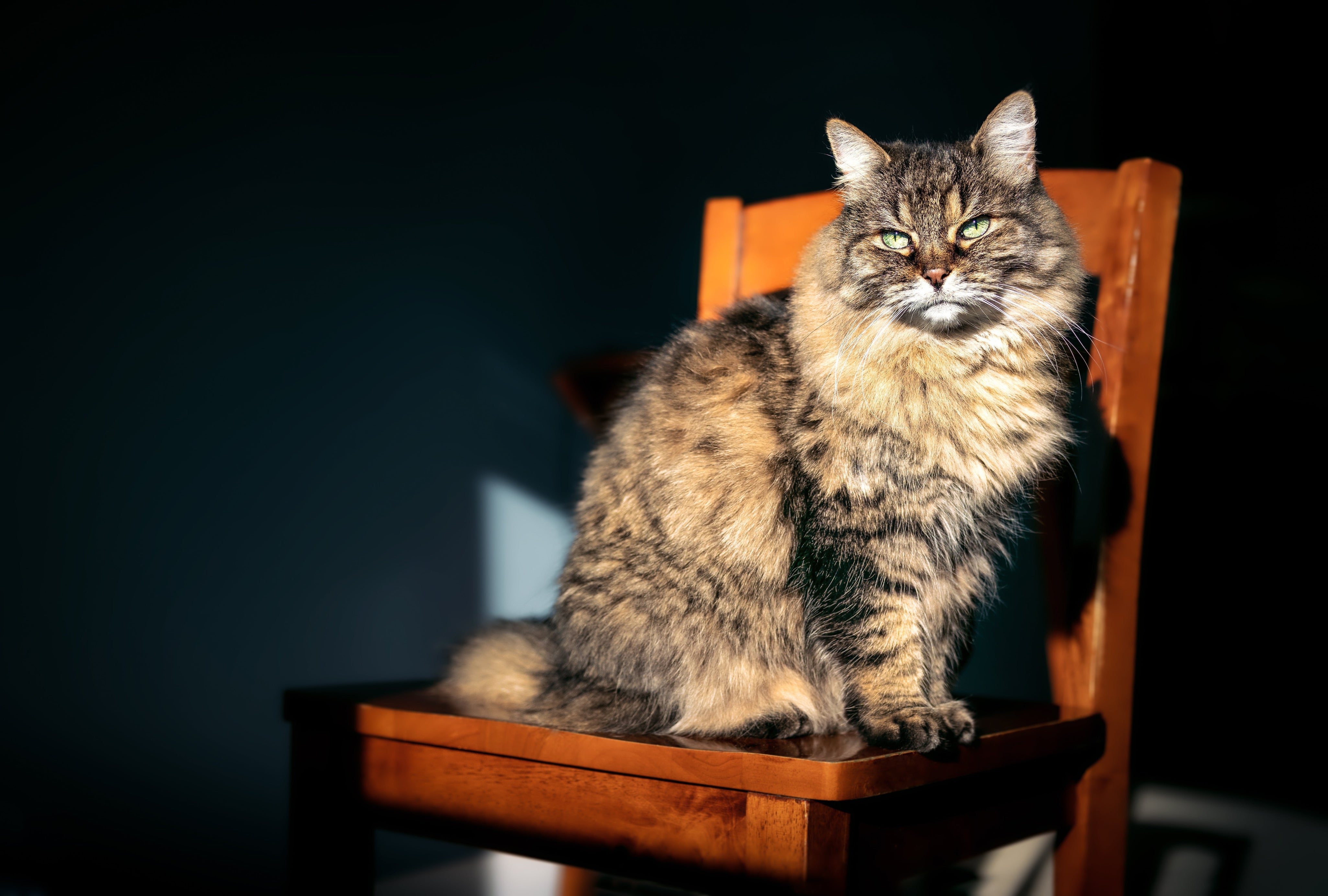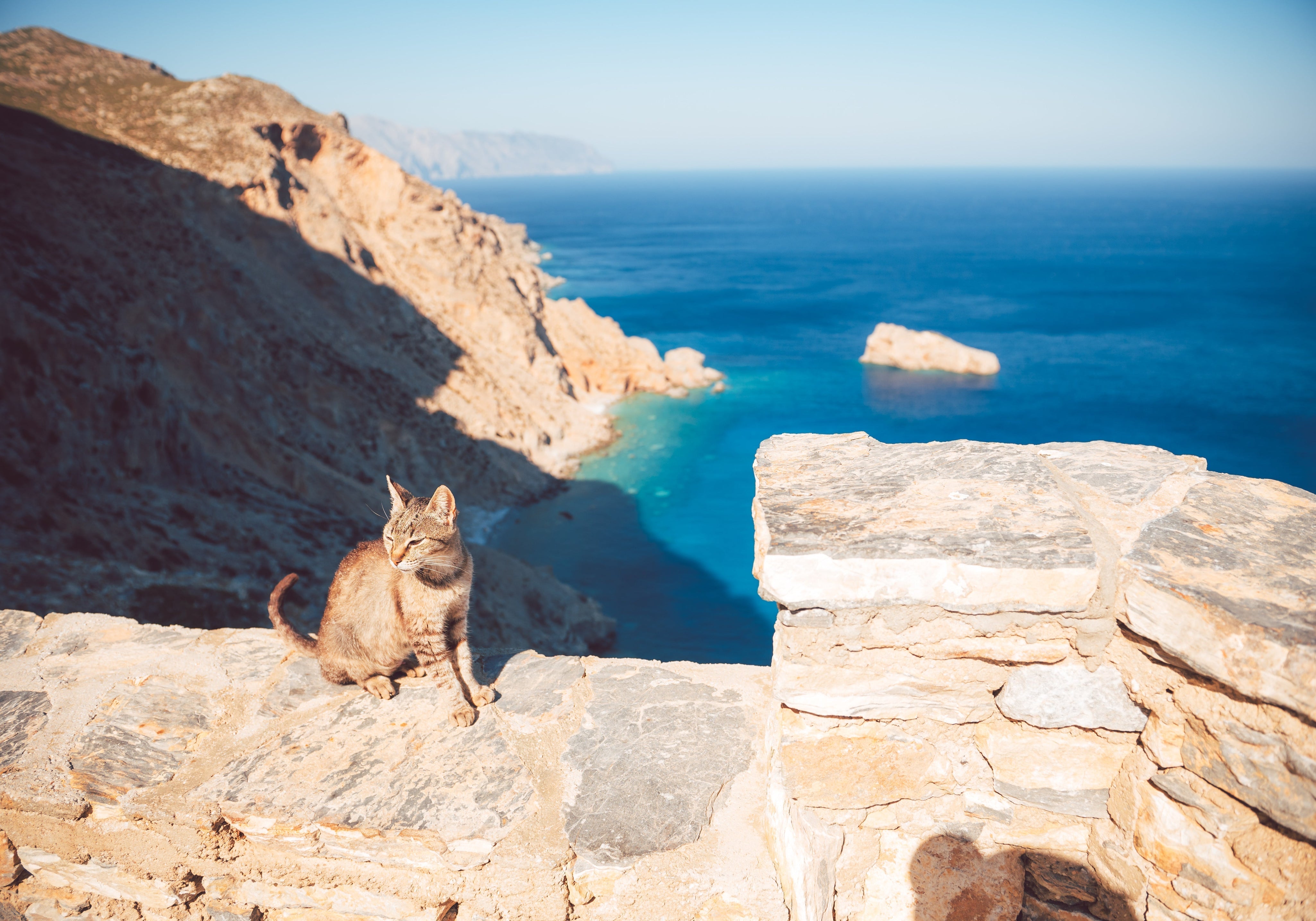Cats have normal life stages just as humans do. Many changes in activity, the senses and physiology are expected, and knowing what’s normal will allow the astute breeder to identify problems and intervene early. Let’s dive into the nuances of ageing in cats, and what you can do as a breeder to ensure your pedigreed cats live their best lives, ageing gracefully whether in your home or their new family’s home.
Life stages in cats
Ageing is a normal process, and not a disease in itself. Veterinarians are increasingly referring to ‘healthy ageing’ as the goal of care. They’re qualifying what’s normal depending on the cat’s life stage, rather than defining what is desirable or expected based on junior or adult measures, which has been the historical practice. The Feline Veterinary Medical Association (FelineVMA) Task Force has designated five life stages, and International Cat Care (ICC) has designated six stages to develop a common framework for speaking about healthy ageing. These age ranges each have definitions of health and disease, seen through the lens of the age range itself.
|
International Cat Care |
AAFP |
||
|
Stage |
Age |
Stage |
Age |
|
Kitten |
0-6 mo |
Kitten |
0-1 yr |
|
Junior |
7 mo – 2 yr |
Young Adult |
1-6 yrs |
|
Adult |
3-6 yrs |
Mature Adult |
7-10 yrs |
|
Mature |
7-10 yrs |
Senior |
10-14 yrs |
|
Senior |
11-14 yrs |
Geriatric |
15+ yrs |
|
Super Senior |
15+ yrs |
|
|
Cat Years to Human Years Calculations:
Cats age at a much more rapid pace than people, but it’s not as simple as “7 years for every human year” as we often hear. Cats mature more rapidly in their first two years than humans do, reaching sexual maturity before one year of age, and slow down their relative biological ageing in comparison to humans to 4 years for every human year after age 2. See the chart below based on the International Cat Care’s human-cat equivalent ages:
|
Cat Age in Years |
Human Age in Years |
|
1 year |
15 years |
|
2 years |
24 years |
|
3 years |
28 years |
|
4 years |
32 years |
|
5 years |
36 years |
|
6 years |
40 years |
|
7 years |
44 years |
|
8 years |
48 years |
|
9 years |
52 years |
|
10 years |
56 years |
|
11 years |
60 years |
|
12 years |
64 years |
|
13 years |
68 years |
|
14 years |
72 years |
|
15 years |
76 years |
|
16 years |
80 years |
|
17 years |
84 years |
|
18+ years |
88 years |
Factors affecting ageing
The factors contributing to ageing in cats is likely as complex as it is for humans, with breed, genetics, indoor or outdoor lifestyle, health history, exercise, diet, care, and stress all contributing to the rate at which the cat ages, as well as whether it’s healthy ageing or not.
Bodyweight and diet
Cats with poor nutrition are expected to age more quickly than cats with a high-quality diet, as with most animals. However, cats that are overfed are also more likely to age and die prematurely. Body condition scoring (BCS) is a common method to quantify levels of body fat, with a score of 5 of 5 associated with obesity or >20% body fat, 4 out of 5 with overweight, and 3 with ideal body weight. Banfield Pet Hospital data found that the life expectancy of cats was best when they were plump or overweight as kittens (BCS 4/5), until age 10–11, at which point it was better to be an ideal body weight (3/5 BCS). Obese cats generally live shorter lives than overweight or ideal body weight cats, with the exception of the period of kittenhood. Other independent studies have also found that kittens with higher birth weights are less likely to die in the neonatal period, which may relate to the nutrition and health of the queen and whether she was able to give the kittens a good start to life.
Genetics
Certain breeds are known to live longer than others. To learn more about breeds and lifespan, read our article on pedigree cat lifespan reviewing the current data. More research is needed to understand how much genetic diversity, genetic disorders, and unknown heritable genetic breed factors play into ageing. In addition, breeders and owners of pedigreed cats often take different care of their cats than owners of household or random bred cats, for example, they may be more likely to have indoor-only cats.
Healthcare
All major studies of cat longevity out of the US, UK, Sweden and Italy have reported significant increases in longevity in the last 20 years. This can be attributed to better medical care of pet cats, including more frequent and earlier vet visits, increasing percentages of indoor-only cats, and the higher social status of cats. As younger cats are more likely to die of infectious disease than older cats, the role of preventative vaccination and parasite control in increasing life expectancy for cats is significant. Renal disease, cancer, and cardiovascular disease progression, all common in older cats, can also be addressed more appropriately with early detection and intervention.

Lifestyle
It's estimated that 90% of UK cats have access to the outdoors, whereas in the US it is 50-60%, and 80% in Australia. That’s an important factor to consider, as the leading cause of death in cats under age 5 is due to car accidents, and indoor cats live 1-2 years longer on average than indoor-outdoor cats. Indoor cats are also less likely to contract an infectious disease, be attacked by larger predators, or get into serious fights with other cats under the watchful eye of their owner.
However, indoor-outdoor cats have a naturally enriched environment to provide entertainment and exercise, so indoor-only cat owners and breeders must address those needs in other ways, which can be more challenging with intact toms and queens in the same home. Cat-friendly features like cat walks, cat trees or access to the outdoors in the form of ‘catios’ promote active cats that maintain healthy body weight and body condition. All help with healthy ageing.
Changes associated with aging
Cardiac
Heart disease is quite common in older cats, and almost 60% of cats over the age of 9 years have murmur detectable by veterinary exam. Some heart murmurs can be associated with dehydration or other health conditions rather than a primary heart problem, not just heart disease like hypertrophic cardiomyopathy or HCM. Signs cats show with heart disease are often more subtle than in dogs. Vets and astute breeders may notice fast or laboured breathing or coughing. Breeders and owners may also notice decreased activity, hiding, decreased interactions with them or other cats, and decreased appetite.
Kidneys
Chronic kidney or renal disease (CKD) is a common finding in older cats, and a leading cause of death in older cats, pedigreed or household. A large study of insured cats in Sweden showed that older Persians and Radgolls are particularly at risk, of the pedigreed cats they studied. One of the most common observable signs of kidney disease by breeders in older cats is weight loss. Older cats do tend to lose a little weight with ageing, but the average is around 2% of body weight. In CKD cats, weight loss is on average 10.8% of body weight, and one study found that for every 100 g of weight loss the risk of death increased by 6.4%, but 100 g of lost muscle mass increased the risk of death by 20%, and lost fat increased the risk of death by 40%, likely related to wasting associated with illnesses like CKD. In addition, monitoring water intake and urination, along with litter box use in general, can help breeders identify changes in kidney function, as impaired kidney function typically results in more water intake and urination than what’s typical for the cat.

Skin and coat
Many breeders can attest that older cats often grey and their colours can look dull. This is due to normal age-related loss of melanocytes, the pigment-producing cells in the hair follicles, and also reduced tyrosinase activity, the enzyme responsible for production of melanin. Melanin is the pigment found throughout the haircoat of non-white cats. Ironically, although older cats tend to grey, the whiskers may turn black with age for unknown reasons.
Sebaceous glands often also decrease in activity and sebum production can change as part of the healthy ageing process. As sebum is responsible for moisturizing the haircoat and skin, these changes can lead to dry, oily, or flaky skin and a dull haircoat. In addition, skin elasticity decreases and nails can become brittle. Many cats have degenerative joint disease as they age and do not self-groom as often, which can also cause clumping of the haircoat.
Digestive system
Ageing cats normally have some decline in appetite, and GI transit time, or the time from eating to defecating, can increase, although there is considerable variability from cat to cat. Increased GI transit time, along with decreased water intake leading to dehydration, are contributing factors to the tendency of senior cats to constipation.
Although we do not have definitive studies in cats, research in humans has shown that there is nerve function loss in the GI system, including the oesophagus and oesophageal sphincter in older people, as well as decreased GI motility, or the wave-like squeezing of the intestines. Feline veterinarians believe these changes also occur in senior cats, predisposing healthy older cats to oesophageal reflux, difficulty passing food down to the stomach, and constipation.
Oral Health
Dental health in ageing cats is especially important given their decrease in appetite, and although periodontal disease and gingivitis are both considered to be associated with disease, not healthy ageing, they are still quite common in older cats. Banfield Pet Hospital’s State of Pet Health reported that 68% of cats over the age of three years had some degree of dental disease, and the age of the cat was proportional to their risk of periodontal disease and severity, including inflammation, bone loss and tooth loosening.
The teeth of senior cats themselves undergo changes which can sometimes be confused with plaque and tartar. The dentin layer of the tooth - the layer beneath the enamel - thickens, and the pulp chamber can shrink, making the tooth appear yellow, tan, glassy or transparent, respectively.
Brachycephalic cat breeds, particularly the Persian breed family, including the Persian, Himalayan, and Exotic Shorthair have a greater predisposition to periodontal disease and oral inflammation due to overcrowding of their teeth, and require special care as they age.
Immune function
Ageing cats typically experience changes in their immune response, with decreases in most white blood cell types and immune response, called immunosenscence, in cats over age 10. This does leave them more susceptible to some infections compared to younger cats, and their complete blood cell counts (CBCs) will often show decreased white blood cell counts (WBC). Conversely, they also are thought to undergo changes that predispose them to inflammation, due to increased immunoglobulins and pro-inflammatory molecules called cytokines. This process is called ‘inflammaging.’ More research is needed to understand what impact this has on disease and health in senior cats.
Sensory ageing
As with humans and dogs, senior and geriatric cats lose smell, hearing and visual acuity as they age, called special sensory changes. This can affect how they respond to sights and sounds, and even change their food preferences. Particularly higher-pitched noises can be harder for the senior cat to hear, and a decrease in smell often drives older cats to prefer “smellier” or more aromatic foods they did not like previously, such as seafood. The aroma of their food becomes particularly important to stimulate appetite. Senior cats will also typically develop lenticular sclerosis, a change of the water composition of the lens which creates a slight bluish or hazy cast to the eyes, but does not affect vision and is different than cataracts. The iris, or coloured portion of the eye may atrophy, creating a lacy or scalloped appearance.

Behaviour and activity
As mentioned previously, decline in special senses, as well as normal ageing can affect the behaviour of senior cats. Senior and geriatric cats tend to be less interested in engaging in play behaviors. However, for the observant breeder behavioural changes are often the first sign that their pedigreed cat is not feeling well and something is wrong. The following behaviours should be monitored in the ageing cat, as some changes are indicators of a disease process:
- Litterbox usage, including frequency, duration and avoidance of the litterbox
- Changes in sleep/wake cycles
- Nighttime vocalisations
- Decreases in jumping or climbing
- Decreases in overall activity or grooming behaviours
- Hiding
- Increased vocalisation or changes in voice
- Decreased or altered interactions with the breeder or owner
- Changes in personality
Decreases in jumping and climbing in particular can indicate the presence of arthritis and degenerative joint disease. Studies have reported 40-92% of all cats may present with signs of DJD, but cats will often only indicate they are painful by decreasing their activity, rather than crying or otherwise attracting attention. Many joints can be affected. Changes in overall activity level or self-grooming can indicate the cat is painful or feeling unwell, and a veterinarian should be consulted. Other behavioural changes including disturbed sleep/wake cycles, apparent confusion, personality changes and vocalisations may point toward pain or agitation due to hypertension or hyperthyroidism, but could also suggest Cognitive Dysfunction Syndrome.

Cognitive Dysfunction Syndrome
Similar to Alzheimer’s Syndrome in humans, Cognitive Dysfunction Syndrome (CDS) is seen in both dogs and cats, and appears to be quite common in aged cats, leading to what is best described as feline dementia or cognitive impairment. It is increasingly recognised to occur in senior and geriatric cats, and because it can be difficult to distinguish from other ageing changes or diseases, a mnemonic of DISHAAL pattern for dogs and cats, or more recently, VISHDAAL abnormalities specifically for cats, are signs used to diagnose the condition. VISHDAAL stands for:
- Vocalisation
- Interaction with owner is altered
- Sleep-wake cycle disturbances
- House-soiling
- Disorientation, whether spatial or temporal
- Activity changes
- Anxiety
- Learning/memory deficits
CDS is typically first noted in cats between 10-12 years of age. One study found that of cats aged 11-21 years, a high percentage of cats had behavioural changes that overlapped with CDS, but after investigation, only 36% of those behaviours were not explained by other underlying medical disease, underlining the importance of ruling out other disorders first. However, it’s important that owners of cats with CDS understand the disease, as some of the signs can be disrupting or frustrating for the owner and the cat. Other diseases excluded, CDS is very common in senior cats:
Studies have found that 50% of cats over 15 years of age and 28% of cats 11–14 years of age have behavioural problems consistent with Cognitive Dysfunction Syndrome.
Researchers found that the senior cats were more likely to have altered interactions with owners and other cats, while the geriatric cats were more likely to have sleep/wake disturbances, changes in activity and excessive vocalisation. Much like humans with dementia, cats with CDS can have problems with memory, seeming to forget their normal schedule, having trouble finding their way out of a room or around familiar furniture, not using the litterbox, asking for food soon after feeding, or seeming to wander or search for something they can’t find. There are medical, dietary and environmental modifications that can help cats and owners dealing with CDS, which also often happen to be helpful for ageing cats in general, which will be discussed below.
What you can do to help your ageing cat
Diet
Senior cats over the age of 10 often have less efficient digestion, so to maintain lean muscle mass, their caloric requirements may increase 10-25%. Any new diets introduced to senior cats should be highly digestible with a high-quality protein source for this reason. As mentioned previously, as sense of smell and appetite may have decreased, be aware that cats may prefer different protein sources and food types, especially those with a high degree of aroma.
Protein requirements in senior cats are also thought to increase and should be addressed, except in instances of conditions like chronic kidney disease, which require protein restriction. A minimum protein content of 30-45% on a dry matter basis has been recommended; wet food protein levels should therefore take into consideration water content, and wet foods often have higher protein content than kibble.
If changing diet is warranted, it’s best to serve the new diet in a separate nearby dish rather than replacing the old diet, to give the cat a chance to acclimate, and have the opportunity to exercise their preferences.

Supplementation
Anti-inflammatory supplements like fish oils, which contain omega-3 fatty acids are often recommended and can help with both CDS changes and address changes associated with inflammaging. L-carnitine and medium-chain triglycerides (MCT) oils can help in ageing, CDS and chronic kidney disease. Denamarin (S-Adenosyl-l-Methionine, SAMe and silybin), Aktivait for cats (antioxidant blend), Neutricks for cats (Apoaequorin, a calcium-binder), and Senilife (antioxidant blend) all can help with brain ageing.
If your cat has CDS, your veterinarian may prescribe xylitol-free melatonin to counteract sleep-wake disturbances, or prescription medications for CDS such as propentofylline or Selegiline (Anipryl), an FDA-approved medication for use in dogs with CDS, which is sometimes used off-label in cats and may help improve neurotransmitter function. Prescription diets to maintain good cognitive function, such as Royal Canin Calm, Hill’s Prescription Diet B/D, and Purina Pro Plan Bright Mind may also be prescribed based on clinical signs and owner history.
Hydration
Cats often have strong preferences about their water, with many cats preferring moving to still water. They are often sensitive to taste and freshness of the water as well. Low-noise drinking fountains, or even an aquarium bubbler in a bowl can entice them to drink more fluids. Some cats do not like their whiskers to touch the sides of the bowl, so shape of the dish should ideally be wide and shallow. Wet cat foods may also help with water intake. Maintaining good hydration has many benefits, helps relieve stress on the kidneys, and counteracts some of the risk of constipation in senior cats.
Environmental modifications
Senior cats are usually less active, are more likely to have joint disease, have higher resting energy requirements and may have cognitive decline, so ensuring they have easily access to key resources like food, water, litter boxes and napping spots is important. If food dishes and water have been placed on a counter to keep them away from the family dog, for instance, the senior cat may not be able to jump up and access their food. Similarly, young children, younger cats and other pets may deter the senior cat from venturing out.
Non-slip flooring such as carpets and rugs and ramps up to preferred napping spots are appreciated by senior cats with decreased muscle mass or joint disease. Safe hiding places and additional litter boxes, food dishes and water fountains allow the older cat to be comfortable without needing to travel as far.
Age-appropriate enrichment activities such as low-intensity training with their owner, puzzles, toys and non-threatening novelties can help keep their brains active. Many cats with CDS have some degree of anxiety, so calming pheromone diffusers can also help them feel safe, and major changes to the household should be carefully considered to reduce stress.
Grooming and toothbrushing
Older cats may not be able to reach all of their body to self-groom as they age and their sebum production changes, so daily grooming by the owner helps keep their coat healthy and stimulates blood flow, and they typically really enjoy it. Nails may become brittle, and if the cat doesn’t scratch as much due to inactivity or arthritis, nails may become overgrown and thick, so more frequent nail trimming is also important. Toothbrushing can be tolerated by cats if introduced slowly, and is the most effective way of maintaining dental health in older cats, especially if they are eating a wet food diet.
Monitoring and health screening
As mentioned previously, one of the first signs that something is wrong, and a strong indicator of prognosis, is rapid changes in body condition and body weight in senior cats. Especially in older long haired breeds, feeling the cat’s body under the haircoat is important to detect changes in muscle and fat levels.
The Feline Veterinary Medical Association recommends in cats over 7 years of age that diagnostic work be performed annually at minimum, with increasing frequency over the age of 10 to detect changes in organ function early. That minimum database includes:
- Complete blood count (CBC)
- Complete serum biochemistry profile (chemistry panel)
- Urinalysis
- Total T4 (thyroid function)
- Blood pressure (BP)
As in humans, frailty is a prognostic indicator for aging in cats, and a diagnostic feline frailty questionnaire (FFQ) has been developed that your veterinarian may be able to provide to you to help you understand your cat’s degree of ageing.
Final Thoughts
Successfully caring for a cat into their senior and super senior years is a wonderful achievement, and a cat in their senior years deserves the same level of care that that they received as a youngster. Ageing can be healthy or characterized by disease, so it’s important to know what is considered normal in order to identify the abnormal. Research is ongoing as to genetic and non-genetic factors that influence the rate of ageing, but diet, lifestyle, care and health history play large roles. Older cats have their quirks, but being able to identify changes like cognitive dysfunction syndrome allow an owner to seek treatment for their cat before changes become disruptive to the cat, the household, and the bond they share with their cat. With proper care, every cat can enjoy their senior years and age with grace.
Resources:
International Cat Care. “How to Tell Your Cat’s Age in Human Years.” https://icatcare.org/articles/how-to-tell-your-cats-age-in-human-years. Retrieved June 2025.
Feline Veterinary Medical Association. “2021 AAFP Senior Care Guidelines.” https://catvets.com/resource/senior-care-guidelines/.
Colleran EJ, Delgado MM, Ren Y, German AJ, Gruen ME, Gunn-Moore DA, Romanowski K, Simpson W, Kirnos C, Keefe Ternes K, Karnia J, Temples M, Taylor SL, Bain M, Buffington CAT. A non-randomized pilot study to test the feasibility of developing a frailty scale for pet cats. Front Vet Sci. 2025 Feb 26;12:1549566. doi: 10.3389/fvets.2025.1549566. PMID: 40078212; PMCID: PMC11897749.
Bellows J, Center S, Daristotle L, Estrada AH, Flickinger EA, Horwitz DF, Lascelles BD, Lepine A, Perea S, Scherk M, Shoveller AK. Evaluating aging in cats: How to determine what is healthy and what is disease. J Feline Med Surg. 2016 Jul;18(7):551-70. doi: 10.1177/1098612X16649525. PMID: 27370393; PMCID: PMC10816674.
Bellows J, Center S, Daristotle L, Estrada AH, Flickinger EA, Horwitz DF, Lascelles BD, Lepine A, Perea S, Scherk M, Shoveller AK. Aging in cats: Common physical and functional changes. J Feline Med Surg. 2016 Jul;18(7):533-50. doi: 10.1177/1098612X16649523. PMID: 27370392; PMCID: PMC10816677.
Colleran EJ, Delgado MM, Ren Y, German AJ, Gruen ME, Gunn-Moore DA, Romanowski K, Simpson W, Kirnos C, Keefe Ternes K, Karnia J, Temples M, Taylor SL, Bain M, Buffington CAT. A non-randomized pilot study to test the feasibility of developing a frailty scale for pet cats. Front Vet Sci. 2025 Feb 26;12:1549566. doi: 10.3389/fvets.2025.1549566. PMID: 40078212; PMCID: PMC11897749.
Sordo L, Gunn-Moore DA. Cognitive Dysfunction in Cats: Update on Neuropathological and Behavioural Changes Plus Clinical Management. Vet Rec. 2021 Jan;188(1):e3. doi: 10.1002/vetr.3. Epub 2021 Jan 12. PMID: 34651755.
Casal ML. Feline Fertility: Consequences of inbreeding and implications for reproductive fitness. J Feline Med Surg. 2022 Sep;24(9):847-852. doi: 10.1177/1098612X221118755. PMID: 36002141; PMCID: PMC10812227.
Mugnier A, Cane T, Gaillard V, Grellet A, Chastant S. Birth weight in the feline species: Description and factors of variation in a large population of purebred kittens. Theriogenology. 2022 Sep 15;190:32-37. doi: 10.1016/j.theriogenology.2022.07.008. Epub 2022 Jul 19. PMID: 35914349.
Cornell Feline Health Center. “The Special Needs of the Senior Cat.” https://www.vet.cornell.edu/departments-centers-and-institutes/cornell-feline-health-center/health-information/feline-health-topics/special-needs-senior-cat. Updated 2016.

